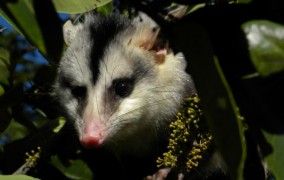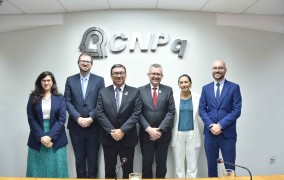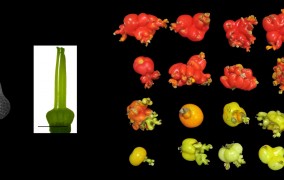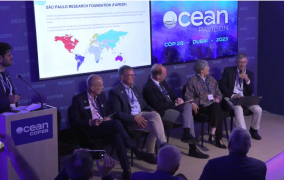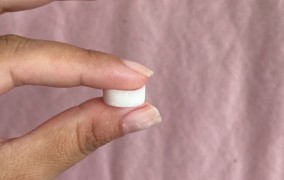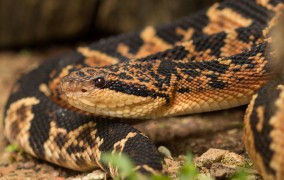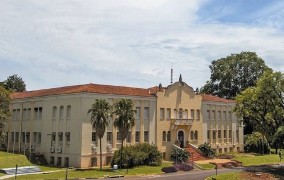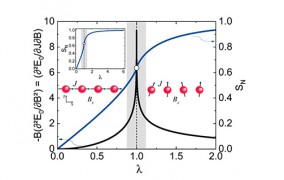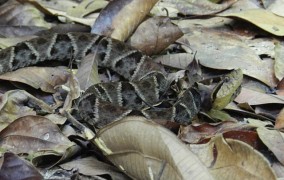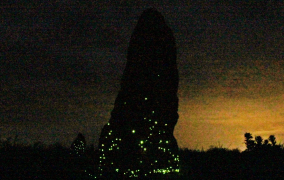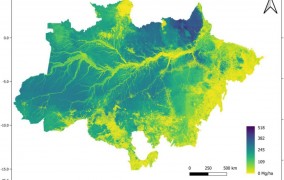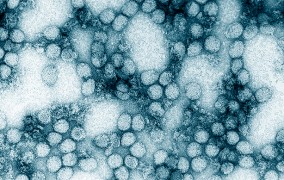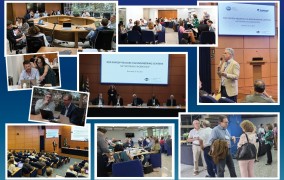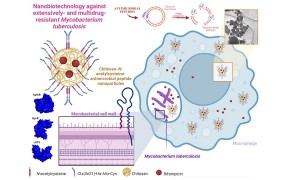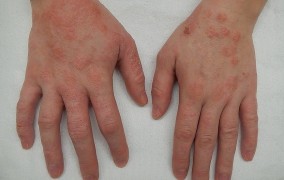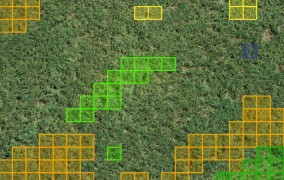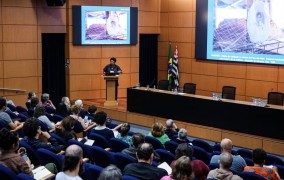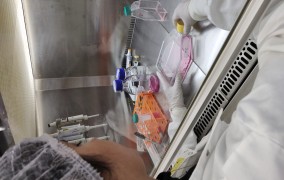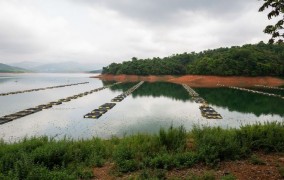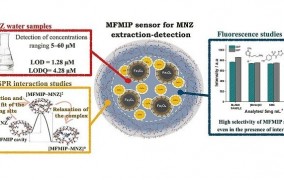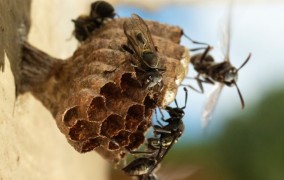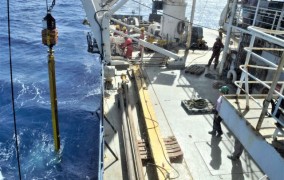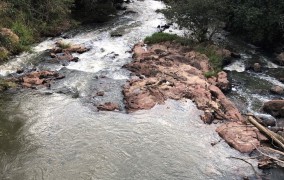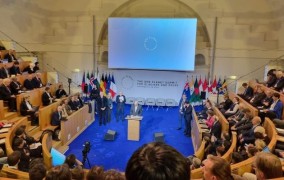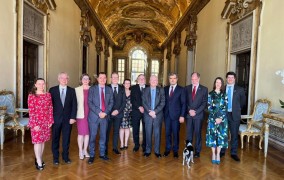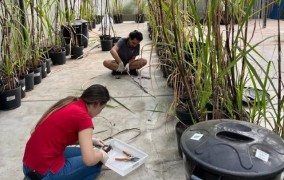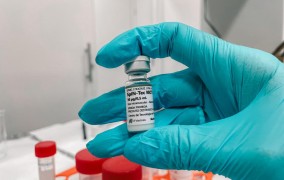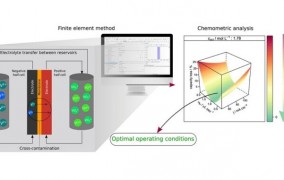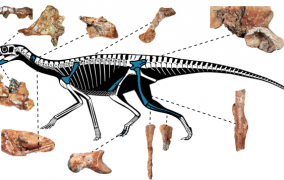
News
-
More than 80% of tree species endemic to the Atlantic Rainforest are threatened with extinction
2024-01-15A study published in the journal Science shows for the first time the degree of threat to all tree species in the biome, classifying 65% as vulnerable or endangered to some extent. According to the authors, their findings are conservative – the actual situation could be even more alarming. -
Climate change: Brazilian semi-arid biome could lose over 90% of mammal species by 2060
2024-01-10Even under the best-case scenario, mathematical models suggest 87% of mammals will be left without a habitat in the Caatinga within three and a half decades. The loss will be worst in the eastern portion of the biome, where its main cities are located. -
Amazon+10 Initiative receives more than BRL 30 million from the United Kingdom
2024-01-10The funding will be for scientific expeditions under the current call for proposals which is taking applications until April 29, 2024. -
Study reveals key molecular mechanisms involved in development of tomato plant
2024-01-10Research conducted at the University of São Paulo shows how interaction between plant hormone gibberellin and small RNA molecules enables development of ovaries, followed by fruit and seeds. This knowledge serves as a basis for ways to increase tomato yield. -
Applications open for School of Advanced Science on Technology and Innovation Strategies and Policies for Economic Development
2024-01-10The school will provide a set of intensive courses for postgraduate students and early-career researchers on the recent developments in the economics of technological change and in ST&I policy studies. Registrations are due on January 26, 2024. -
Climate intelligence platform supports decision-making by farmers and agroindustry
2024-01-10Agrosmart, a startup based in São Paulo state, presented its portfolio of solutions during COP28, the UN Climate Change Conference held in Dubai. -
FAPESP at COP28 reinforces coalition to create new international body to protect the oceans
2024-01-10The International Panel for Ocean Sustainability (IPOS) will translate scientific information into policymaking decisions that help protect the world’s oceans. -
Intravaginal sponge can make treatment of candidiasis more comfortable and effective
2024-01-08The device is under preclinical trials; the sponge is made of soft, biodegradable material and releases medication slowly into the organism. -
Brazilian researchers discover two novel peptides with biotechnological potential in snake venom
2024-01-03Fragments of hemorrhagic toxins that may help treat high blood pressure were found in the venom of the pit viper Cotiara, which inhabits the South of Brazil, and that of the South American bushmaster, a denizen of tropical rainforests. The molecules might one day be used in drugs with fewer adverse side effects. -
Startup develops rapid test to help detect cervical cancer
2024-01-03The kit is designed to be used for screening. If the result is negative, it should be repeated a year later. If positive, the individual should see a specialist. -
São Paulo School of Advanced Science in Precision Livestock Farming accepts applications until January 20
2024-01-03The main aim is to optimize farm management via real-time control of animal productivity and environmental impacts, among other things. -
Researchers at São Paulo State University propose conditions for maximizing quantum entanglement
2024-01-03Entanglement is a key concept in quantum physics and a condition for the success of quantum computing. -
Incomplete notification and underreporting of snakebites can hinder public health actions, study suggests
2024-01-03A survey conducted in a Brazilian state with the country’s second-highest number of ophidic accidents draws attention to the need to train health workers to complete notification forms correctly. Better data will help improve research and antivenom distribution. -
Growth hormone influences regulation of anxiety via a specific group of neurons
2024-01-02Researchers at the University of São Paulo identified in mice the neurons associated with the anxiolytic effect of growth hormone. Their discovery paves the way for the development of novel classes of medications for neuropsychiatric disorders. -
Diversity of bioluminescent beetles in Brazilian savanna has declined sharply in 30 years
2024-01-02Surveys conducted in the Cerrado since the 1990s show falling biodiversity as the agricultural frontier advances in the vicinity of Emas National Park. Species with biotechnological potential are dwindling and even disappearing. -
A new map showing all above-ground biomass in the Brazilian Amazon
2023-12-20The map is derived from a study conducted by researchers at Brazil’s space research institute and collaborators, and combined airborne laser scanning, satellite imagery and forest inventories. The results will support planning, conservation and sustainable management decisions. -
3D material found to break down antidepressant that contaminates water bodies worldwide
2023-12-20Brazilian researchers tested a photocatalyst based on zinc oxide and found it to perform well in degrading sertraline, an emerging pollutant. -
Brazilian researchers report detailed analysis of heart injury caused by yellow fever virus
2023-12-20The study is the first-ever demonstration of the anatomical substrate for the cardiac arrhythmias that occur in human yellow fever. -
Workshop assembles researchers affiliated with centers supported by FAPESP and United States’ NSF
2023-12-20The event took place in São Paulo on November 29-30 to foster interaction and promote center-to-center relations. -
Nanoparticles with antibacterial action shorten duration of tuberculosis treatment
2023-12-20Researchers at São Paulo State University tested the action of nanoparticles loaded with antibiotics and other antimicrobial compounds on cells infected by the bacillus that causes tuberculosis. The results suggest the strategy can overcome multidrug bacterial resistance. -
Photodynamic action weakens resistance to antibiotics in bacteria that attack airways
2023-12-18A study conducted at the University of São Paulo’s Optics and Photonics Research Center in Brazil showed a change in the bacterium’s sensitivity after five applications. -
Gut-skin connection is key factor in atopic dermatitis, research review shows
2023-12-18A review article by Brazilian researchers lists recent discoveries on this chronic inflammatory skin disease, which affects around 10% of adults and 25% of children. -
Atmospheric pollutants in São Paulo exceeded recommended levels even at the height of the pandemic
2023-12-18Brazilian researchers analyzed air pollution in metropolitan São Paulo in 2019-20 when mobility restrictions and social distancing applied in the southern hemisphere’s largest city. Even so, the daily average exceeded the World Health Organization’s air quality standard on 75 days. -
Artificial intelligence applied to drone imagery helps improve agricultural productivity
2023-12-13A Brazilian startup’s AI algorithms detect infestations, classify weeds and produce localized spraying files. -
Applications open for São Paulo School of Advanced Science on Transdisciplinarity
2023-12-13The event is being organized by the State University of Campinas with FAPESP’s support. About 80 applicants will be selected. Priority will be given to PhD candidates, early-career researchers, public servants with a master’s degree and Indigenous community leaders with recognized know-how in this field. -
The art of Rosana Paulino lays bare the trauma of slavery in Brazil
2023-12-13The artist outlined her life’s work in the Eighth FAPESP 2023 Lecture, which was entitled “Roots that emerge: interweavings of art and science”. -
Embedding nanodiamonds in polymer can advance quantum computing and biological studies
2023-12-13Researchers at the University of São Paulo’s São Carlos Institute of Physics developed the technique, which can be used in information processing and cell marking, among many other applications. -
Study paves way for development of advanced quantum networks
2023-12-12This research carried out at the State University of Campinas focused on the use of nanometric optomechanical cavities as bridges between superconducting circuits and optical fibers, with applications in computing and quantum communications. -
Soybean oil production residue can be used to make a product that treats symptoms of menopause
2023-12-11Scientists in Brazil have tested a method to obtain a substance similar to estrogen from soy isoflavones. They aim to create a product that reduces the discomfort suffered by many women in the menopause. -
Long COVID is linked to persistent damage to mitochondria, the ‘powerhouses’ of our cells
2023-12-11Infection by SARS-CoV-2 can suppress the expression of mitochondrial genes involved in production of ATP cell fuel in many vital organs. The discovery paves the way to a search for strategies to restore mitochondrial function. -
New RIDC will work to reduce greenhouse gas emissions and increase carbon sequestration in agriculture
2023-12-06The Center for Carbon Research in Tropical Agriculture (CCARBON) is a Research, Innovation and Dissemination Center (RIDC) supported by FAPESP and hosted by the University of São Paulo’s Luiz de Queiroz College of Agriculture (ESALQ-USP). It was officially launched on November 17 and aims to make food, fiber and energy productivity part of the solution to the climate crisis. -
Copaiba oil nanoemulsion found to have antiviral potential against zika
2023-12-06Results of tests with the substance pave the way for the development of medications or specific vaccines against zika, for which there is currently no treatment. The number of cases rose 20% year on year in the first seven months of 2023. -
FAPESP-supported research center embarks on program of digital inclusion in ten Brazilian municipalities
2023-12-06Hosted by the Brazilian Agricultural Research Corporation (EMBRAPA), the new center will establish Agricultural Technology Districts in which to conduct research, development and innovation activities in emerging technologies. The initiative has the potential to reach 14,000 small and medium rural properties. -
Brazilians create sensor to monitor levels of widely used antibiotic in water and food
2023-12-06The device, which combines magnetic fluorescent nanoparticles, was designed at the Center for Development of Functional Materials, a research center supported by FAPESP and hosted by the Federal University of São Carlos. -
Biopesticide is harmless to mammals but can wipe out colonies of wasps that benefit plants
2023-12-06Albeit less lethal than synthetic insecticides, this fungus-based substance is not detected by social insects and can spread spores to entire nests, threatening the survival of species that play a key role in pest control and pollination. -
New study proves that severe COVID-19 is a thrombotic disease
2023-12-05In an article published in the Journal of Applied Physiology, researchers at the University of São Paulo show that damage to small blood vessels in the lungs caused by SARS-CoV-2 is the main factor underlying severe COVID-19. -
Research group plans to map potential for hydrogen production in sugar and ethanol industry
2023-12-04The goal is to produce sustainable aviation fuel from sugarcane biomass and ethanol. -
Analysis of carbon cycle during last glacial period can help monitor climate crisis
2023-11-29A study conducted in Brazil analyzed marine sediments to investigate gas exchanges between the ocean and the atmosphere in the recent past. The researchers concluded that a rise in the temperature of the South Atlantic caused a release of CO2 trapped at the bottom of the Southern Ocean. -
Cognitive training can improve the quality of everyday life
2023-11-29Technology developed by a startup supported by FAPESP has been used to improve the performance of athletes like soccer goalkeeper Ederson, who plays for Manchester City and Brazil’s national side, and to reduce the number of accidents caused by human error in the petrochemical and meatpacking industries. -
Researchers profile pollutants present in an important river basin in São Paulo state, Brazil
2023-11-29Scientists at the State University of Campinas analyzed samples taken at 15 points in the basin comprising the Piracicaba, Capivari and Jundiaí Rivers, and detected 45 contaminants, including compounds from agricultural, industrial and household effluents not yet regulated by Brazilian legislation. -
Study elucidates how ionizing radiation damages DNA
2023-11-29The research focused on the damage done to DNA indirectly by oxidizing chemical species such as the hydroxyl radical. -
FAPESP participates in international summit on poles and glaciers in France
2023-11-29The One Planet Polar Summit was attended by people from over 40 countries, including researchers, experts, members of business enterprises and nonprofits, and representatives of Indigenous Peoples. -
FAPESP strengthens research collaboration with Italy
2023-11-29Senior executives of the foundation visited leading Italian universities and scientific institutions with the aim of increasing collaboration. -
Review article shows key role of Brazil in research on sugarcane for bioenergy
2023-11-27The study by researchers at the University of São Paulo also shows that genetic engineering techniques need to be improved in order to increase ethanol production without expanding crop acreage, a strategy considered crucial to the effort to cope with climate change. -
A Brazilian vaccine may be the ideal choice for annual vaccination campaigns against COVID-19
2023-11-22Called SpiNTec, the vaccine can induce a more lasting immune response and should be more effective than vaccines currently available in Brazil against variants of the novel coronavirus SARS-CoV-2, according to the leader of the local vaccine development project, who took part in the FAPESP 2023 School in Exact and Natural Sciences, Engineering and Medicine. -
‘Science must go into corner stores, bars and homes,’ urges Brazilian astronomer who works with NASA
2023-11-22On a visit to São Paulo to participate in the FAPESP 2023 Interdisciplinary School in Exact and Natural Sciences, Engineering and Medicine, astrophysicist Duília de Mello argued that science popularization can combat epistemic bubbles. -
FAPESP and the University of São Paulo are participating in the Ocean Pavilion at COP28 in Dubai
2023-11-22A group of organizations led by Woods Hole Oceanographic Institution (WHOI) and the University of California San Diego’s Scripps Institution of Oceanography have established an online platform to raise the visibility of the ocean and highlight its importance to climate negotiations and life on the planet. -
Researchers obtain promising results against capacity loss in vanadium batteries
2023-11-22A computational study conducted by the Center for Development of Functional Materials at the Federal University of São Carlos (UFSCar) in Brazil could help extend the working lives of these batteries, which are widely used by utilities and manufacturers. -
Quick test analyzes DNA to improve crops
2023-11-22A technological solution developed by a Brazilian startup with FAPESP’s support detects microorganisms that cause disease in eucalyptus, soybeans and other agricultural plants. They can be detected in grains, leaves and the air. -
New fossil assemblage highlights complexity of classifying silesaurid phylogeny
2023-11-21The fossil assemblage was found in the state of Rio Grande do Sul, one of Brazil’s richest paleontological regions. The bones belonged to animals that lived between 247 million and 208 million years ago. It is difficult to confirm they can be considered species of dinosaur.
Most popular
-
Study identifies molecular alterations in brain tissue and blood of people who committed suicide
2024-03-13
-
Study helps explain why stress in adolescence can lead to predisposition to mental illness in adulthood
2024-01-24
-
Study shows that Rio Grande Rise was once a giant mineral-rich tropical island near Brazil
2024-01-31
-
Butantan Institute’s dengue vaccine protects 79.6% of those vaccinated, study shows
2024-02-01
-
Brazilian researcher helps describe a novel species of jellyfish discovered in a remote location in Japan
2024-01-31
-
Growth hormone influences regulation of anxiety via a specific group of neurons
2024-01-02
-
Amphibians use scream inaudible to humans for self-defense against predators, study suggests
2024-04-03
-
Biodegradable sensor monitors levels of pesticides via direct contact with surface of fruit and vegetables
2024-01-31
-
Weight training improves symptoms of anxiety and depression in old people, study confirms
2024-04-10
-
Study reveals evidence of violence at a time of crisis in ancient Peru
2024-03-27






